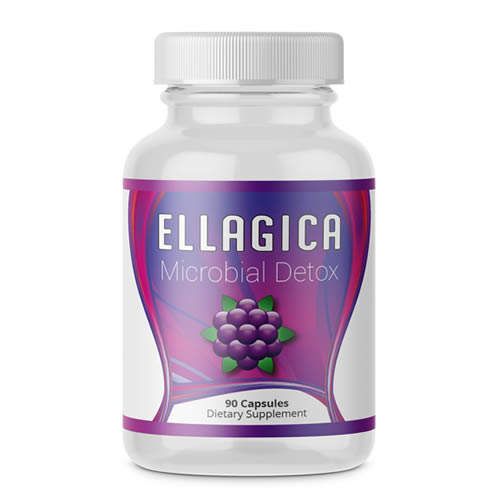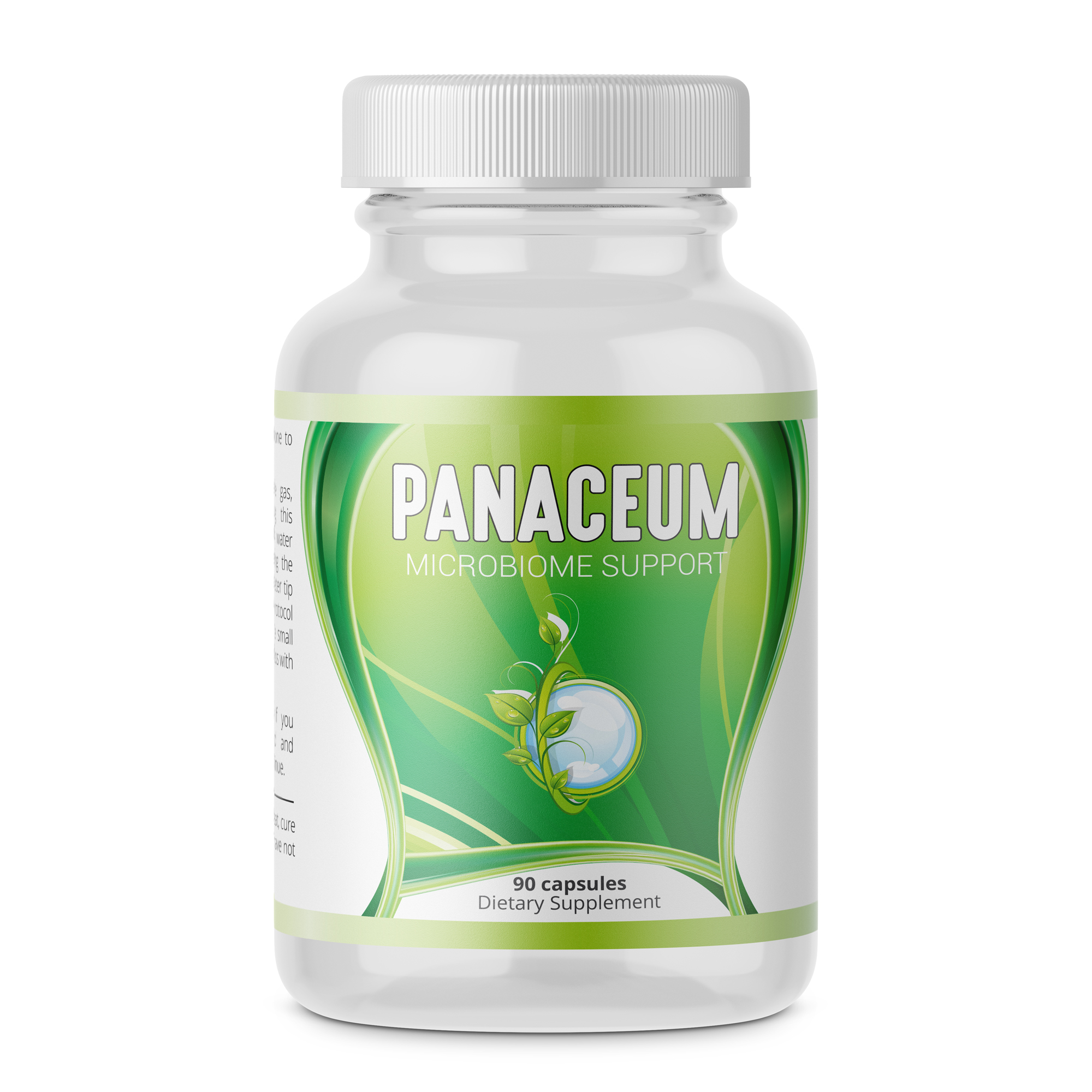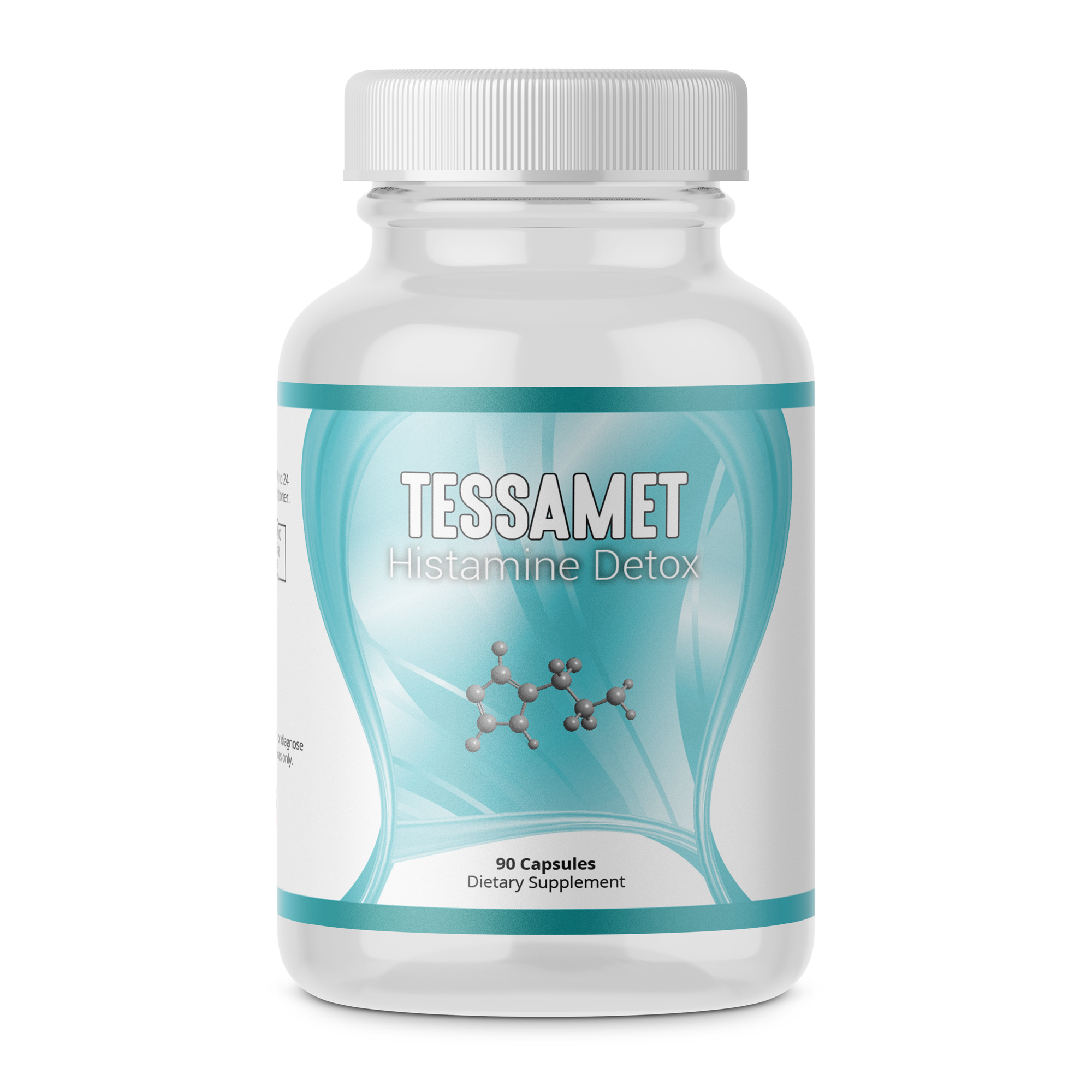
Tessamet: Histamine Detox Support
Support the body in dealing with excess histamine, mast cell activation, mold and other allergies.
615 in stock
 Primitive humans had a lot of helminths (worms) to contend with. Too large to be attacked by the immune system, the body had to remove them mechanically. Mast cells release histamine which causes itching to make us scratch them off, coughing to get them dislodged from our respiratory tracts, a runny nose and sneezing to get them out of our sinuses and diarrhea to get them out of our intestines. With allergies, the body mistakes harmless allergens for parasites and tries to remove them. This response causes us symptoms.
Primitive humans had a lot of helminths (worms) to contend with. Too large to be attacked by the immune system, the body had to remove them mechanically. Mast cells release histamine which causes itching to make us scratch them off, coughing to get them dislodged from our respiratory tracts, a runny nose and sneezing to get them out of our sinuses and diarrhea to get them out of our intestines. With allergies, the body mistakes harmless allergens for parasites and tries to remove them. This response causes us symptoms.
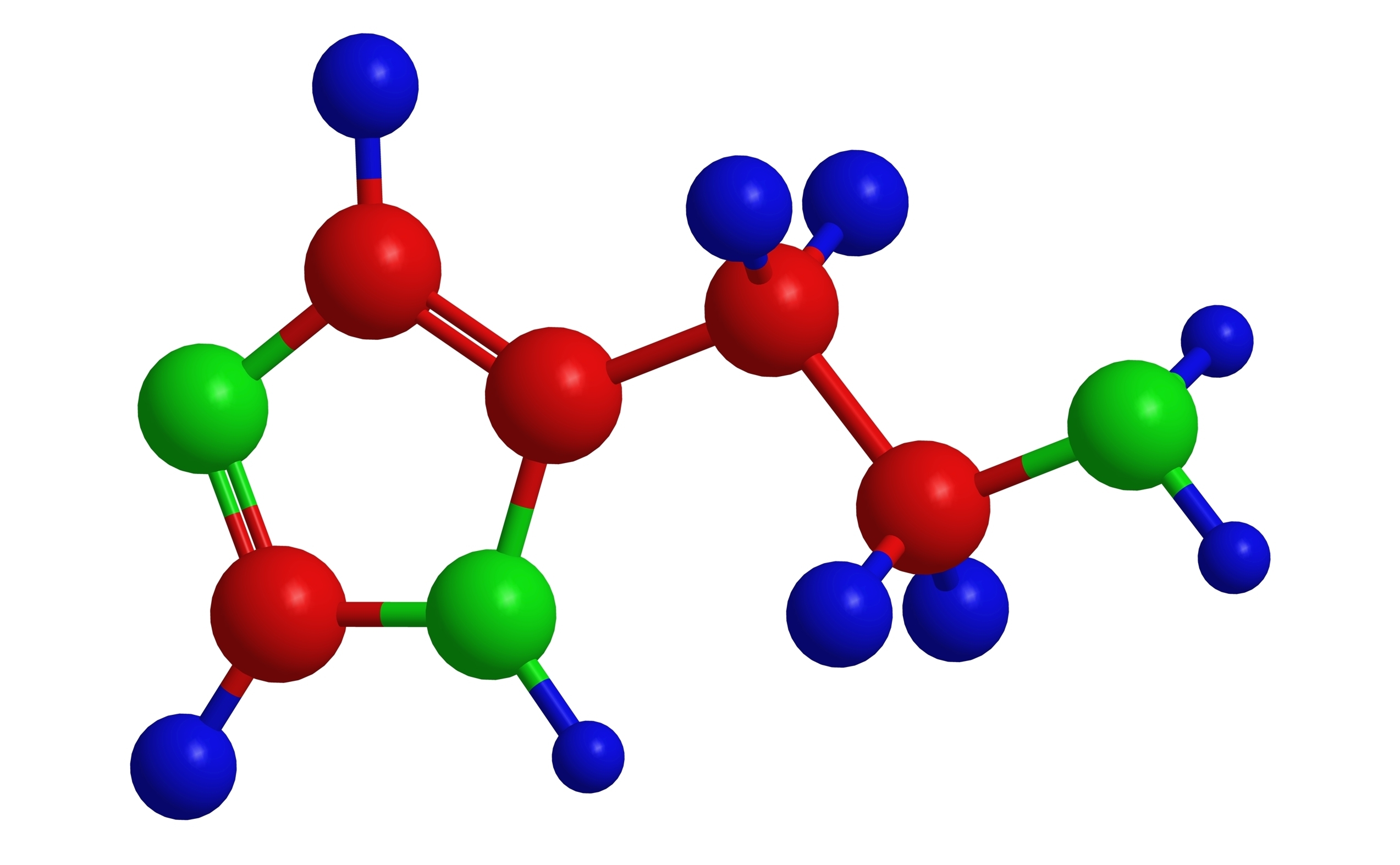
Histamine is both a hormone and a neurotransmitter and it has receptors all throughout the body. There are 4 classes of histamine receptors, named H1, H2, H3, H4.H1 and 2 go to the skin, gut and lungs and give us our classic allergy symptoms. Itchy or painful skin, food allergies, asthma and sinus inflammation. Less well known are that they also go to the heart and the reproductive organs. This means we can have an allergy heart, an allergic prostate, an allergic uterus. To properly deal with histamine 4 actions must be undertaken. 1- Re-educate the T cells of the immune system not to react to harmless allergens. 2- Suppress the over creation of histamine from the dietary amino acid histidine. 3- Stabilize mast and other cells that release histamine. 4- Increase serum DAO (diamine oxidase), the enzyme responsible for the break down of histamine.
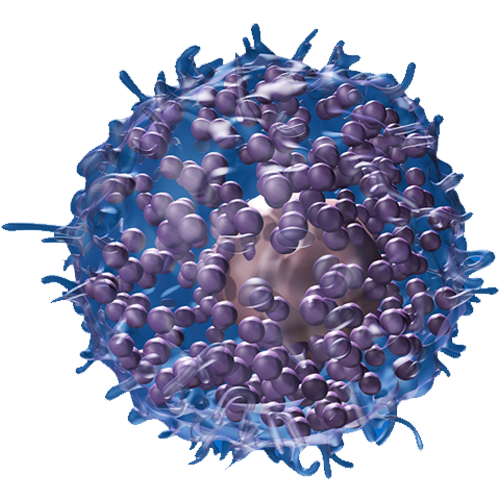 Mast cells are an ancient part of our immune system predating antibodies. For some people, mast cells over-react to normal environmental elements and cause problems. In addition to releasing histamine, they can also release prostaglandins, leukotriene, tumor necrosis factor, trypase and heparin. Stabilizing mast cells is important in maintaining health.
Mast cells are an ancient part of our immune system predating antibodies. For some people, mast cells over-react to normal environmental elements and cause problems. In addition to releasing histamine, they can also release prostaglandins, leukotriene, tumor necrosis factor, trypase and heparin. Stabilizing mast cells is important in maintaining health.
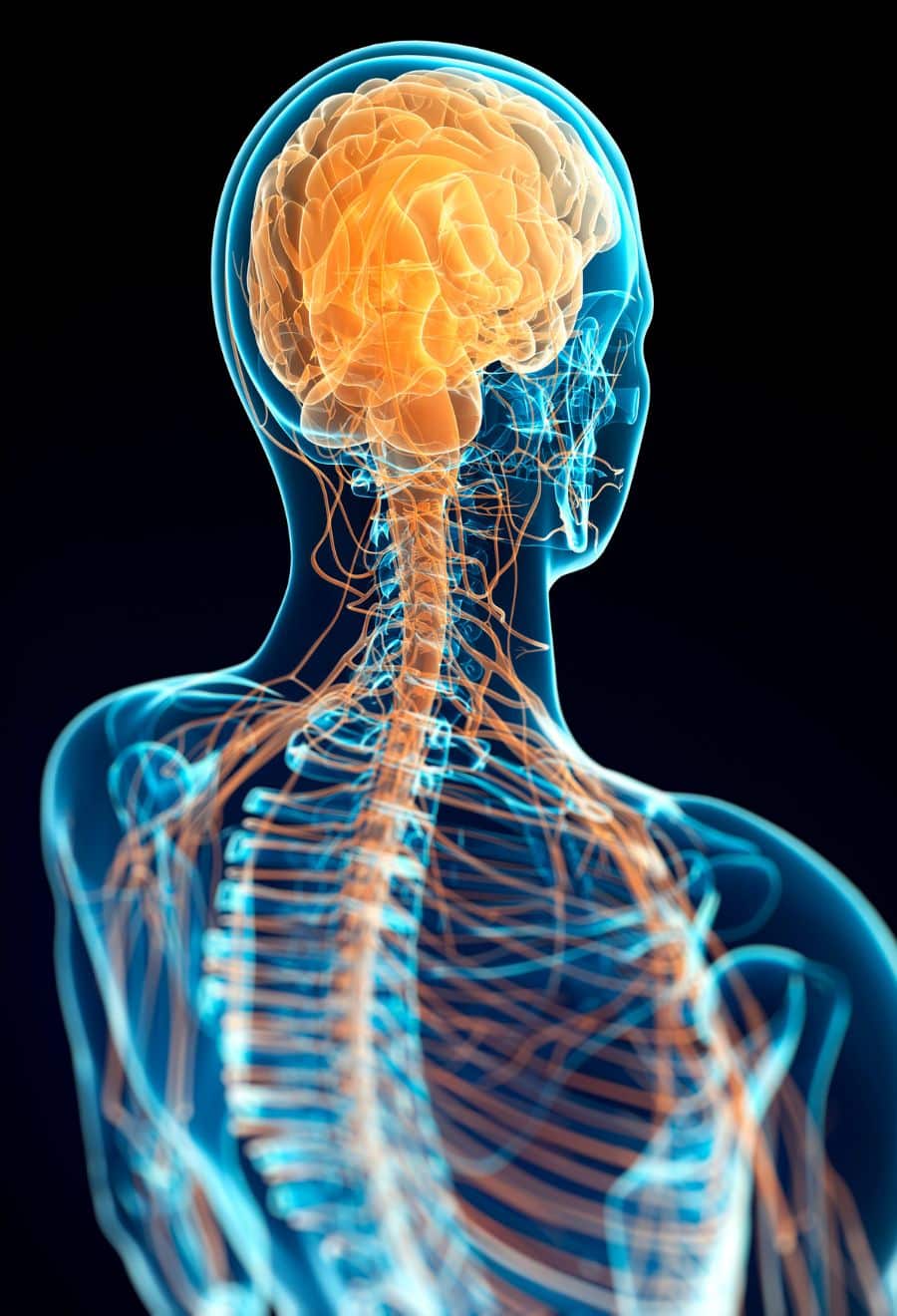 H3 receptors in the brain control the release of neurotransmitters. If body levels of histamine go too high, to protect the brain from toxic levels of histamine (and mania), H3 will LOWER histamine in the brain. This can lower the level of the neurotransmitters acetylcholine, dopamine, serotonin, norepinephrine and GABA. Low acetylcholine makes it hard to learn and remember. Low dopamine decreases motivation and in the extreme leads to Parkinson’s disease. Low serotonin leads to depression. Low Norepinephrine leads to difficulty focusing and ADHD. Low GABA makes it hard to relax or get deep sleep.
H3 receptors in the brain control the release of neurotransmitters. If body levels of histamine go too high, to protect the brain from toxic levels of histamine (and mania), H3 will LOWER histamine in the brain. This can lower the level of the neurotransmitters acetylcholine, dopamine, serotonin, norepinephrine and GABA. Low acetylcholine makes it hard to learn and remember. Low dopamine decreases motivation and in the extreme leads to Parkinson’s disease. Low serotonin leads to depression. Low Norepinephrine leads to difficulty focusing and ADHD. Low GABA makes it hard to relax or get deep sleep.
Yes, a person can have an allergic brain and spinal column.
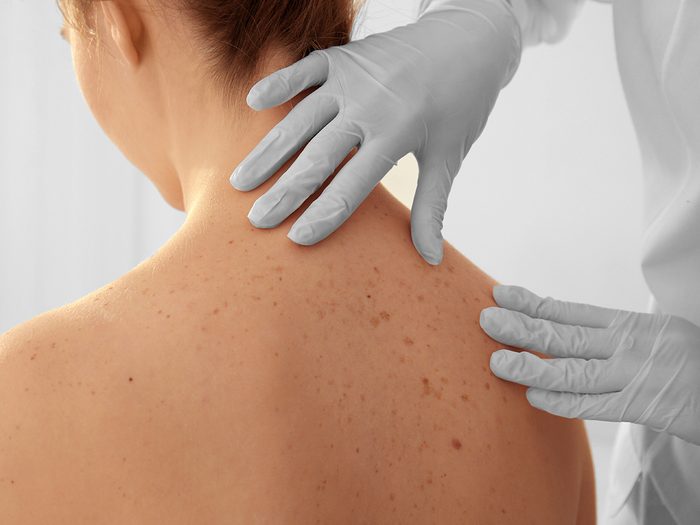
Excessive histamine can activate H1 and H2 receptors in the skin causing rashes, itching and nerve pain. If the nerves of the sexual organs are affected, what should be experienced as pleasure can be uncomfortable instead.
 H1 and H2 receptors are found in the digestive tract. Excess histamine can lead to acid reflux, gas, stomach aches or loose stools.
H1 and H2 receptors are found in the digestive tract. Excess histamine can lead to acid reflux, gas, stomach aches or loose stools.
 High levels of histamine can activate H1 and H2 receptors in the lungs and sinuses causing respiratory and sinus issues.
High levels of histamine can activate H1 and H2 receptors in the lungs and sinuses causing respiratory and sinus issues.
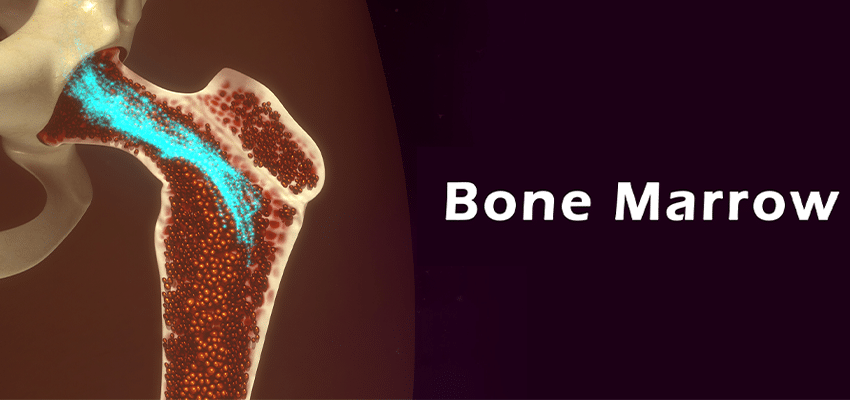 High histamine can trigger H4 receptors in the bone marrow and immune system leading to dysfunctional immunity.
High histamine can trigger H4 receptors in the bone marrow and immune system leading to dysfunctional immunity.
 High histamine can trigger H1 and H2 receptors in the heart leading to arrhythmias and high or low blood pressure. Yes, a person can have an allergic heart.
High histamine can trigger H1 and H2 receptors in the heart leading to arrhythmias and high or low blood pressure. Yes, a person can have an allergic heart.
Ingredients: Rosmarinic acid, EGCG, quercetin, DAO (diamine oxidase-porcine origin), sunflower lecithin, MCT, phosphatidyl choline, ethanol, glycerine, plant cellulose, candellia wax and purified water.
Protocol: Consider 1 capsule a day initially. Do not exceed 2 capsules per day.
Do not continue if you experience an upset stomach or a rash lasting more than 3 days.
If you feel worse, not better, you may have a H3 histamine receptor issue. Discontinue and consider a Conessine extract.
For optimal results:
Go on a low histamine diet*
Consider histamine reducing probiotics (see Foods for Gut Histamine Reducing Formula).
Take supplemental SAMe (If you don’t methylate well, this will support the other histamine degrading enzyme Histamine N-methyltransferase.
High histamine containing and releasing foods include (but are not limited to):
You may wish to consider these as well…
Ellagic acid stabilizes mast cells. While quercetin (found in Tessamet) is a mast cell stabilizer, adding in ellagic acid may be supportive as well. You may wish to consider our Ellagica product
PFAS (forever chemicals) are now planet-wide. They are even found in rainwater. PFAS trigger IgE production (the antibody that causes allergies). Glutathione (along with glutathione-S-transferase) can conjugate PFAS out of the body. Consider our Xeneplex product.
Dysbiosis in the large intestine can lead to the creation of histamine and other toxic amines like Putrescine and Cadaverine. These amines downgrade the histamine reducing capacity of DAO (di-amine oxidase), our native histamine reducing enzyme. Improving your gut microbiome is highly suggested when dealing with any kind of histamine issue. You may wish to consider our Panaceum product.

